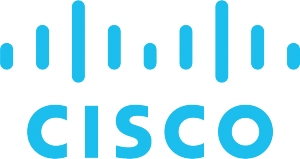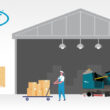The Future of Work: Governments’ Next Normal
We’ve all seen how the pandemic has changed the way state and local governments work and how they’re delivering services to the people of their communities. We’ve also watched as it accelerated changes in the public sector workplace, impacting which technologies are adopted—and how they’re used—the effects of which will be felt for decades. People call it the “next normal” but the truth is it’s long overdue. The future of work is now here.
A Cisco executive perspective from Mike Witzman
We’ve all seen how the pandemic has changed the way state and local governments work and how they’re delivering services to the people of their communities. We’ve also watched as it accelerated changes in the public sector workplace, impacting which technologies are adopted—and how they’re used—the effects of which will be felt for decades. People call it the “next normal” but the truth is it’s long overdue. The future of work is now here.
It’s clear that the correct use of technology can add strong value to how governments operate and provide services. But it can also help drive an inclusiveness that is critical to building the transparency and responsiveness now needed in government due to the events of the past year. And it all starts in the government workplace.
The future of the government workplace
As state and local government leaders continue IT modernization to increase their resilience, better handle citizen services and meet the demands of ever-changing use environments, they’re also taking a close look at how and where their employees work.
The general feeling is that the return to office for government workers is going to be gradual, but the biggest caveat is that it isn’t a return to what we had. Instead, we’re seeing the need for:
- Less but more flexible physical spaces
- Secure and reliable WiFi access anywhere, anytime
- Secure and easy-to-use advanced collaboration tools like Webex
- Smarter, more intuitive buildings.
Flexible and secure whether remote or in-office
For government workers, especially the next-generation of workers, the ability to connect now transcends the physical and there’s no turning back. The virtual workplace is a part of their daily experience. So secure and reliable wireless access, combined with multi-faceted collaboration tools, is needed to enable individual workers and whole teams to scale their work environments as conditions change, often unexpectedly. Plus, they need to be able to relocate quickly, often to remote locations, and be able to work anywhere, anytime 24/7 in response to unexpected events and to better serve citizens.
That’s why the hybrid work environment model is here to stay in government (how to get started). It has proven viable technically. Plus, it enables a greater level of freedom for your staff to meet changing personal and family needs efficiently and safely while still being productive working from their offices, homes and while in transit.
The future of work and government IT
Changes in the workplace mean changes in IT infrastructure, especially your network’s capability to handle the loads needed to reliably and easily access your network remotely (how to secure collaboration in the cloud). This piggybacks on the need to secure your data while its stored and in-transit. So, an end-to-end holistic approach to security is quickly becoming mandatory for government agencies (how to secure your government network).
There is also the need to limit access to sensitive apps or specific parts of your network. This involves deploying solutions that excel at verifying devices that attempt to connect to your network (how to verify devices with FedRAMP level security).
While state and local governments have been undergoing IT modernization for the better part of a decade, the accelerated adoption of hybrid work environments has altered their journeys. As the flow of network traffic shifts to the new model, the management and delivery of apps and services will move further into the cloud and out of the datacenter. This will raise the stakes for security in government IT. This is driving the need for centralized security policies with cloud-based controls and delivery. This is also driving Secure Access Service Edge (SASE) and other edge networking solutions further into the mainstream of the public sector.
The future of work and smart buildings
Many government buildings will undergo some level of retrofitting as the need for increased flexibility continues to redefine building architecture. Like the foundation and framing, IT is now a core component of a building, merging with the beams and columns that form its skeleton. The result is making buildings smarter and more intuitive. And the timing of this evolution is perfect for state and local entities seeking a safe return to the physical office (learn about smart building technologies).
Smart buildings contribute greatly to physical safety and security in the workplace. As a strategy, they both speed and simplify the deployment of solutions such as density monitoring, touchless controls, sensors and IP cameras. A good example of their use during the recent pandemic includes smart lighting morphing into UVC lighting for automated sanitization of workspaces (how to maintain trusted facilities and workspaces).
As they seek to reimagine government, state and local agencies must consider how their buildings can help workers deliver citizen service more efficiently. As new facilities are planned, and existing ones retrofitted, each step of serving citizens must be considered from an IT perspective. Transforming their initial point of contact with citizens can be a good starting point, one that can be enhanced by deploying a single cloud contact center platform. Strategies for leveraging IT infrastructure to streamline social services (telehealth), speed response by public safety teams and to make it easier for citizens to engage government should also become a part of how government looks at smart building opportunities.
Brought to you by:






















